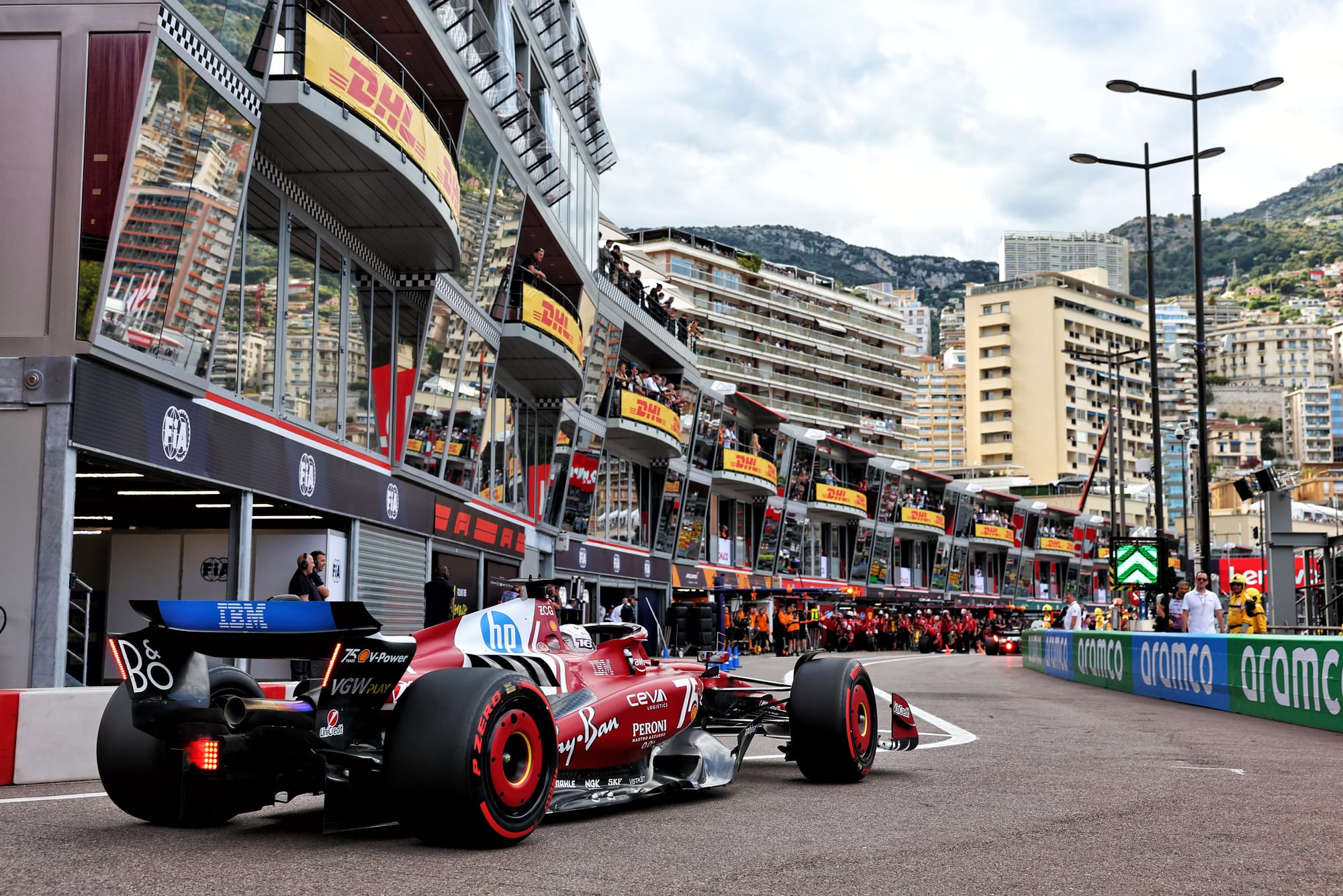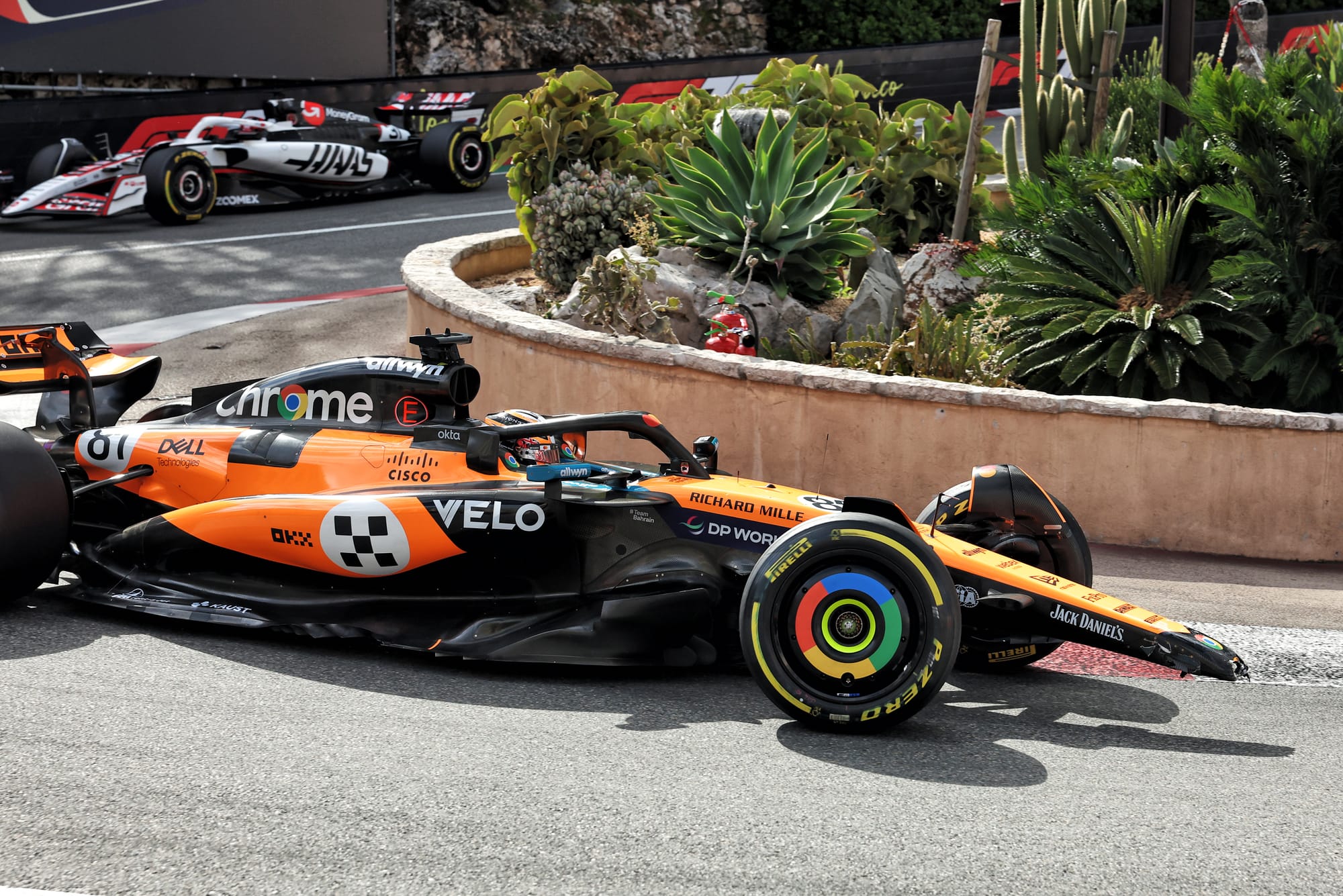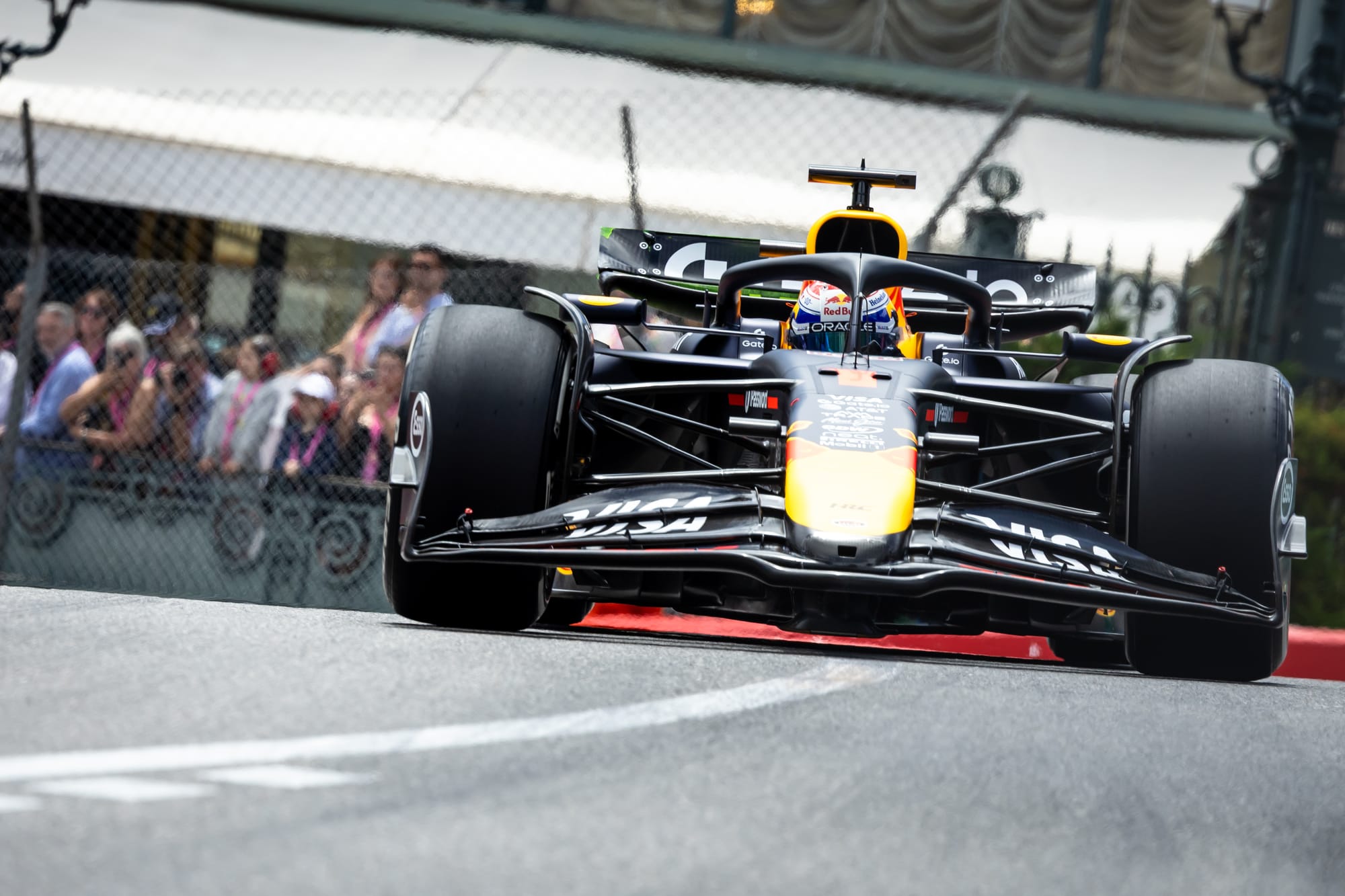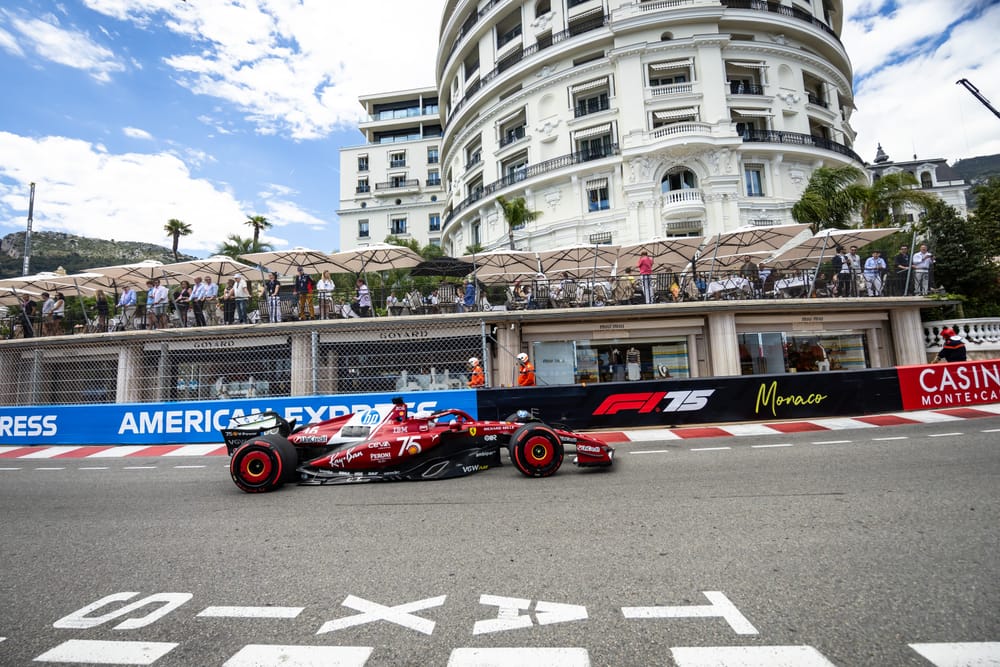Ferrari was all over Monaco’s kerbs and slow corners and Charles Leclerc was his usual audacious Monaco self in how he expressed himself around here. He was quickest in both Monaco Grand Prix Friday Formula 1 practice sessions with Lewis Hamilton in the sister car right behind him in the headline times.
Are the red cars really the fastest? Maybe not. McLaren and Max Verstappen’s Red Bull look to have very similar potential. But Leclerc looks at the very least a contender for a pole that may just be more valuable than any other pole all season.
In the run-up to this Monaco weekend, Ferrari – and Leclerc in particular – were playing down their chances of being competitive here. We’re particularly weak in slow corners, they pointed out.
That was surely just containing expectations. Because, yes, in the post-China version of the car and the set-up they’ve had to use to keep it from grounding excessively at high-speed, slow corners have been very much its weakness. For that’s when the rear ride height is at its maximum, and higher than the floor was designed for. But in Bahrain testing, Melbourne and China, before the plank disqualification enforced a ride height rethink, the Ferrari was the quickest thing around in slow corners. Just as its predecessors of the previous three years had been.
It has excellent mechanical grip when not having to run at a greater static ride height than its rivals and its super-responsive low-speed acceleration builds on that. Monaco is the first post-China track where no compromise has been needed to cover the corner speed spread – i.e. there are no fast corners to worry about. So it’s essentially back to its original set-up and seems to be working just fine like that.

Pole being so valuable here, what we’ve just seen could be a repeat of Leclerc’s 2021 insistence that the team devote absolutely everything to achieving it and forget about anything else. So Ferrari may have deliberately stressed the C6 tyre more, with a more representative qualifying power unit mode. Certainly, it was faster than anything else as soon as it got into its stride and that’s where we might expect McLaren and Red Bull to have a big jump to make when it counts for real.
But a look at the GPS traces show that around the tightest sections – from Mirabeau, through the hairpin and down to Portier – the Ferrari is dynamite. Although not as good on the brakes as either the McLaren or Red Bull, both Leclerc and Hamilton are able to get on the throttle way earlier. Seven metres earlier for Leclerc out of Mirabeau than Norris or Verstappen. Extra power unit mode would certainly explain some of the car’s low-speed acceleration advantage – but wouldn’t account for how much earlier the Ferrari drivers are able to hit the gas. That’s mechanical grip.

Oscar Piastri spoke on Thursday about the best way to be clear of all the possible strategic complications around the compulsory two-stop race was to qualify on pole. He said it so often it feels like he may be on something of a mission. Certainly his crunching of the nose of his McLaren into the Ste Devote barriers was very untypical. But it disrupted his session. Max Verstappen went straight-on there (as had Leclerc in FP1) and it’s clear that limits are being pushed even more than usual.
With the possible exception of the early race leader who might want to sprint away from all the strategic complications, long run pace is not what this weekend is going to be about. So there wasn’t much time devoted to it, especially since running time had been curtailed by two red flags (for the offs of Isack Hadjar and Piastri).
But the pace on the mediums of Lando Norris’s McLaren and Hamilton’s Ferrari was pretty much identical over the 5-6 laps stints they did. Leclerc was within a tenth of a second of that pace on the hard tyres after six laps. Verstappen’s medium run was disturbed by his Ste Devote incident and Piastri’s by his light crash so they did an unrepresentative number of laps.
That said, Verstappen was not as happy with the Red Bull in FP2 as he’d been in the morning.

“FP1 was quite positive but then we made some changes for FP2,” he explained.
“We looked at how far we could push the balance and I think we just overdid it a little bit and I couldn’t attack the corners as much as I would have liked to. We were shedding a lot of pace and lap time.”
There's a big chunk of pace to come there, quite clearly.
Mercedes appeared to be struggling rather more, even allowing for what appeared to be a more measured approach.
If we factor in the usual Red Bull set-up improvement from Friday to Saturday, and McLaren turning up the wick, Ferrari probably isn’t a sure-fire thing for pole. But in stark contrast to its pre-event messaging, it is very much in the hunt.



